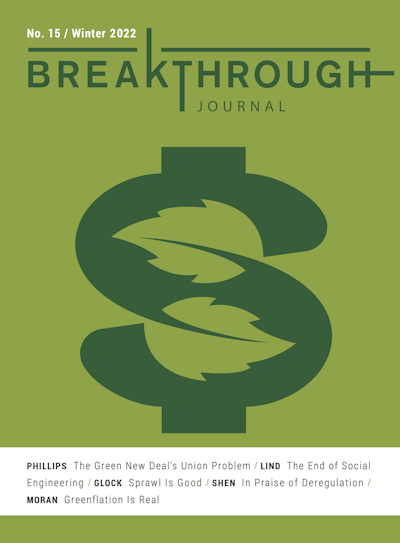Tech Talk: Get Negative about the Climate
Sustaera and the Future of Direct Air Capture
-
-
Share
-
Share via Twitter -
Share via Facebook -
Share via Email
-
According to the most recent report from the Intergovernmental Panel on Climate Change (IPCC), temperatures around the world are destined to rise by 1.5°C within the next decade and are on track to hit 2°C by 2050—based on the current global policies and pledges.
To have any chance of staying under 2°C, then, reducing emissions will have to work alongside efforts to subtract them from the environment. But how? Plenty of technologies have been developed to capture CO2 emissions from power plants and industrial sources, but those won’t make enough of a dent in reducing carbon emissions.
Additional approaches are needed, and one that has been growing in both research and application is direct air capture, otherwise known as DAC. In its most basic form, DAC technology focuses on capturing CO2 from ambient air. This CO2 can be stored permanently, either underground or in certain products (such as cement). Or it can be utilized as a feedstock for other products, such as carbon-neutral jet fuel. Imagine multistory air purifiers set up in fields with ample access to sunlight and wind that suck in air, separate the CO2, store it underground, and release the CO2-free air back into the atmosphere.

Although promising in theory, there have been myriad challenges to DAC in practice.
First, although there are several companies pursuing it, the technology is still in its early stages. The first DAC plant, built by Climeworks, just went live in Iceland. It has the ability to capture up to 4,000 tons of CO2 per year—about the amount emitted by 870 passenger vehicles in one year. More facilities will go live within the next decade.
Second, DAC machines are energy intensive. The CO2 concentration in ambient air is 0.04 percent (400 ppm), which means that capturing 1 ton of carbon requires moving almost 3,000 tons of air through the system. That takes power. Utilizing fossil fuels as an energy source is counterintuitive and limits the net carbon one can capture. Although renewable energy technology continues to expand, the intermittency of renewables still presents challenges. DAC companies that can find ways to utilize renewables will be the most cost effective and capture efficient.
Third, there’s the question of what you do with the CO2 once you capture it. There are a limited number of wells that are permitted for sequestration. This will need to grow significantly for DAC to be a viable approach. Beside sequestration, companies are in various stages of utilizing captured CO2 for manufacturing construction materials, aviation fuel, plastics, and other products.
Lastly, there is a lack of incentives for DAC companies to scale up. An idea popular among most economists is a carbon tax that puts a price on each ton of carbon emitted. Such schemes are mainly intended to reduce emissions, but a side benefit is that they would give DAC companies a way to monetize their processes. Although carbon credits exist today, significant ambiguity exists in the market, particularly around how offsets work, since most carbon captured by afforestation and the use of renewable feedstocks such as biomass can end up back in the atmosphere. With DAC, though, CO2 is stored forever or reused—ensuring a real subtraction of emissions.

Despite the obstacles, there is a lot of optimism around DAC. Around the world, multiple companies, such as Climeworks, Carbon Engineering, Sustaera (where we work), and Global Thermostat, have been working tirelessly to develop solutions to subtract CO2 from the air. Each has their own approach to addressing the problem. Some have developed their technologies based on membranes or solid sorbents; others on cryogenic freezing, liquid solvents, ocean capture, or carbon mineralization.
In every case, the key ingredient for success will be optimizing cost, leveraging existing supply chains, and scalability. That’s why, for its part, Sustaera, a spin out from Susteon, (which develops technology solutions centered around CO2 and hydrogen), uses an abundantly available, low-cost capture agent and tries to keep energy costs low with an innovative chemical reaction pathway. It also relies on existing supply chain infrastructure and makes use of energy provided by renewable sources (solar, wind) and carbon-free nuclear energy.
At scale, Sustaera aims to capture 1 million tons per year per facility with a targeted cost of less than $100 per ton by 2027. By 2040, with multiple facilities around the world, it aims to have captured 500 million tons of CO2. Already, Sustaera has proven the technology at lab scale and plans to build a 1 ton/day pilot plant in 2022. Nevertheless, for companies like Sustaera and others to succeed in limiting global temperatures, an improved regulatory framework across the globe is required.
We can restore the carbon balance, but we need all hands on deck.




